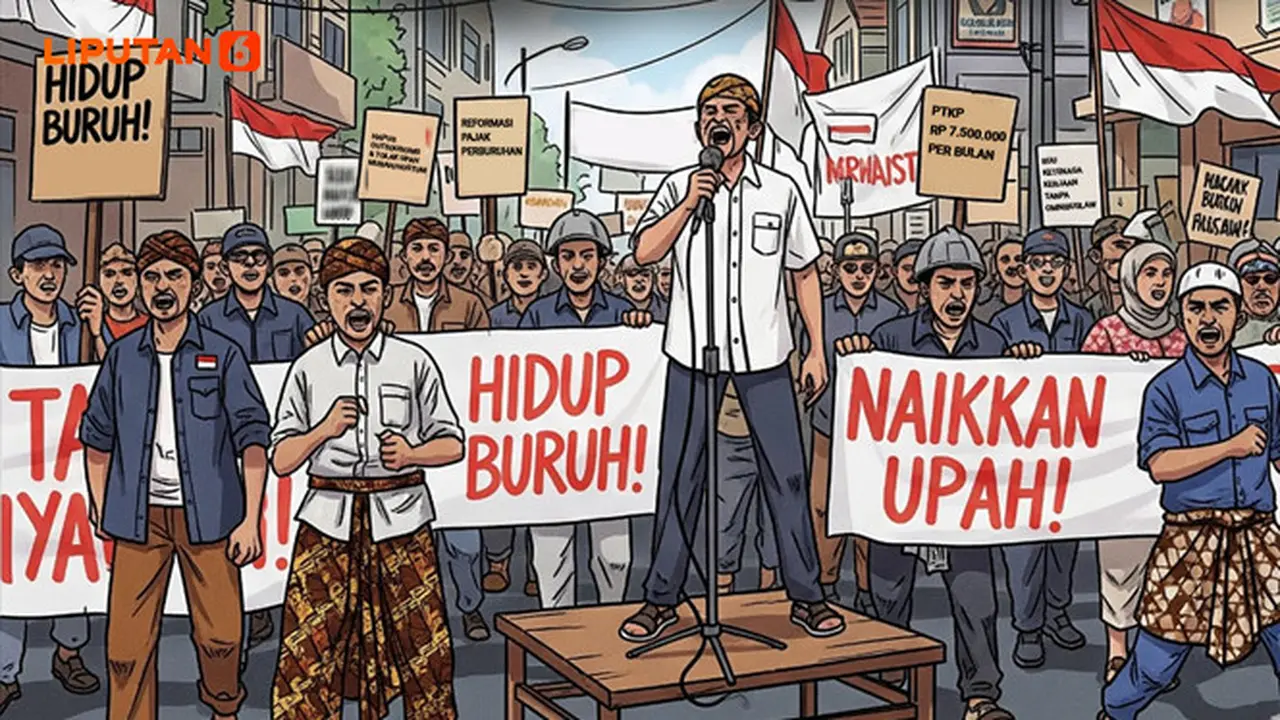Planned Demonstration on August 28, 2025: Nationwide Protest, Demands, and Implications
UncategorizedOn Thursday, August 28, 2025, Indonesia is set to witness another round of nationwide demonstrations. The planned protest, spearheaded by labor unions, student organizations, and civil society groups, highlights ongoing discontent with government policies in the economic, labor, and regulatory sectors. Although demonstrations have long been part of Indonesia’s democratic landscape, the August 2025 action is predicted to be one of the most significant in recent years.
This article takes a closer look at the background of the protest, the main actors involved, possible consequences, and what the public should anticipate.
Background of the Protest
The roots of the planned demonstration can be traced back to months of growing frustration among workers, students, and activists. Several issues have fueled this movement:
- Economic Pressure
Inflation, rising food prices, and stagnant wages have placed heavy burdens on households. Many feel that economic policies have not adequately protected low- and middle-income groups. - Labor and Employment Concerns
Labor unions argue that current employment laws do not sufficiently protect workers’ rights. Discussions around wage standards, job security, and outsourcing continue to trigger dissatisfaction. - Regulatory Disputes
Certain newly implemented regulations are perceived to favor big corporations rather than the general public. Civil society groups demand revisions and greater transparency in lawmaking.
Together, these grievances have created a collective sense of urgency, motivating various organizations to coordinate mass mobilization.
Main Locations of the Demonstration
While protests are expected to occur across multiple provinces, Jakarta will likely serve as the epicenter. Two areas, in particular, are predicted to host the largest gatherings:
- The National Monument (Monas) area: A symbolic location often used for public demonstrations.
- The Parliament Complex (DPR/MPR RI): Protesters are expected to direct their demands at lawmakers and government institutions.
Other major cities, such as Surabaya, Bandung, Yogyakarta, and Medan, are also preparing for localized demonstrations in solidarity with the central action in Jakarta.
Who Will Join the Protest
The planned August 28 protest is not limited to one group. Instead, it represents a coalition of diverse organizations:
- Labor Unions: Workers from various sectors, including manufacturing, transportation, and services, are expected to join. Their primary demand centers on better wage policies and improved labor protections.
- Student Organizations: University students from different campuses plan to mobilize, highlighting issues of democracy, governance, and youth involvement in policy-making.
- Civil Society Groups: Activists advocating for social justice, human rights, and environmental sustainability are also part of the movement.
The unity of these groups suggests a protest of considerable scale and influence.
Anticipated Government and Security Response
Authorities have announced preparations to ensure public safety and order. Thousands of police personnel are expected to be deployed, particularly in Jakarta. Security measures may include:
- Road closures and traffic diversions near protest hotspots.
- Monitoring of public transport to manage large crowds.
- Dialogue teams to engage with demonstrators and prevent escalation.
Government officials have also urged protest leaders to keep the action peaceful and avoid disruptions that could harm the public interest.
Public Impact and Possible Disruptions
For residents, commuters, and businesses, the August 28 protest could lead to noticeable disruptions:
- Traffic Congestion: Jakarta’s central roads are expected to experience heavy congestion due to roadblocks and mass gatherings.
- Public Transportation Delays: TransJakarta, commuter lines, and MRT services may face interruptions as large groups of protesters move across the city.
- Business Slowdowns: Areas around Monas and DPR/MPR are likely to see reduced business activity for the day.
Citizens are advised to plan their mobility carefully, avoid protest areas if possible, and monitor real-time updates from authorities.
Voices from the Ground
Leaders of labor unions emphasize that their movement is not an act of hostility but a call for fairness. “Workers demand recognition and better treatment. We will march peacefully to deliver our message,” said one union representative.
Student leaders echoed this sentiment, underlining their role as agents of change. “Our presence in the streets is a reminder that youth cannot remain silent when policies harm the people,” a student activist declared.
Broader Implications
The outcome of the August 28 demonstration could shape Indonesia’s political and social climate in several ways:
- Policy Pressure
Large-scale protests may push the government to reconsider or revise controversial regulations. - Public Trust
How the authorities handle the demonstration—whether with tolerance or force—will influence public trust in democratic institutions. - Future Movements
If the protest succeeds in making its voice heard, it may inspire further mobilizations in the months to come. Conversely, if it is met with repression, public discontent could escalate.
Conclusion
The planned demonstration on August 28, 2025 is more than just a protest; it is a reflection of growing frustration, solidarity, and civic engagement. With workers, students, and activists joining forces, the action highlights deep-rooted challenges in economic management, labor rights, and democratic governance.
As Indonesia braces for this event, both the government and the public will watch closely to see whether the protest serves as a catalyst for change or a new chapter of confrontation.

